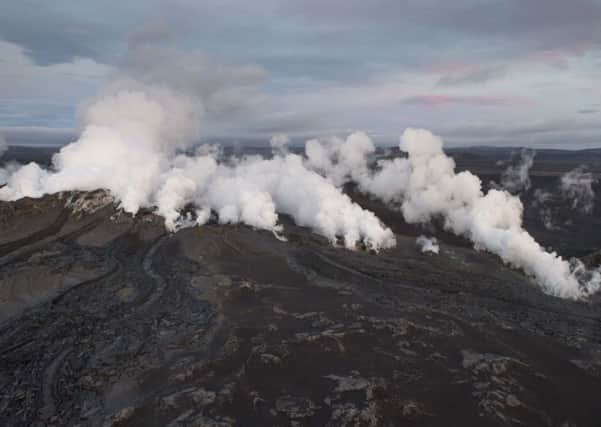Iceland’s volcanoes ‘not a threat’ to flights


No sign of ash like that from the Eyjafjallajökull eruption that shut much of Europe’s airspace in 2010 has been detected this time.
But the Icelandic Metrological Office said a no-fly zone in a radius of three nautical miles just above the Bardarbunga volcano in central Iceland would remain in effect.
Advertisement
Hide AdAdvertisement
Hide Ad“The small eruption is not a threat to aviation and the published aviation warning area has been cancelled,” Iceland’s Met Office said.
The country’s largest volcanic system, which cuts a swath 118 miles long and up to 15.5 miles wide across the North Atlantic island, has been hit by thousands of earthquakes over the past two weeks and scientists have been on high alert in case of an eruption.
Reykjavik’s Met Office said that just after midnight yesterday, an estimated one kilometre-long fissure eruption began in a lava field north of the Vatnajökull glacier, which covers part of the Bardarbunga system.
While the risk of an ash cloud is highest in case of a sub-glacial eruption, Icelandic authorities for a few hours yesterday morning raised the aviation warning level to red, the highest on a five-colour scale and indicating that an eruption was imminent or under way, with a risk of spewing ash.
The latest eruption was at the tip of a magma dyke 24 miles from the main Bardarbunga crater and activity subsided to relatively low levels after peaking between 12:20am and 2am GMT, seismologist Martin Hensch said yesterday morning.
He added that it was impossible to say how the eruption would develop.
“One of the concerns is that the fissure opens into the glacier but presently there is no sign of that happening,” he said, adding that the eruption was six to eight kilometres from the glacier.
Nick Petford, a vulcanology expert at the University of Northampton, said fissure eruptions were often spectacular but relatively low key and frequently died out in a couple of days. But there could be a sting in the tail, he warned.
Advertisement
Hide AdAdvertisement
Hide Ad“Exactly the same thing happened in 2010 with the Eyjafjallajökull volcano,” Mr Petford said.
“The main eruption was in April, but in March there was a fissure eruption which was a precursor to the much larger eruption.”
The Eyjafjallajökull event was particularly disruptive because it pushed ash up to precisely the elevation used by transatlantic aircraft, while prevailing winds propelled the cloud into European airspace. The ash was also particularly sticky due to its chemical composition. Mr Petford said that if the current eruption subsided, scientists would be looking for signs of more quakes deeper under the volcano, which would suggest more magma was welling up, and for any swelling of the volcano that could be measured using GPS.
He added: “Those are pretty clear evidence that large amounts of magma are being stored within the volcano and that’s a good indication it will explode.”